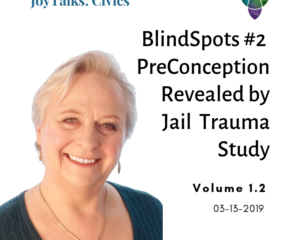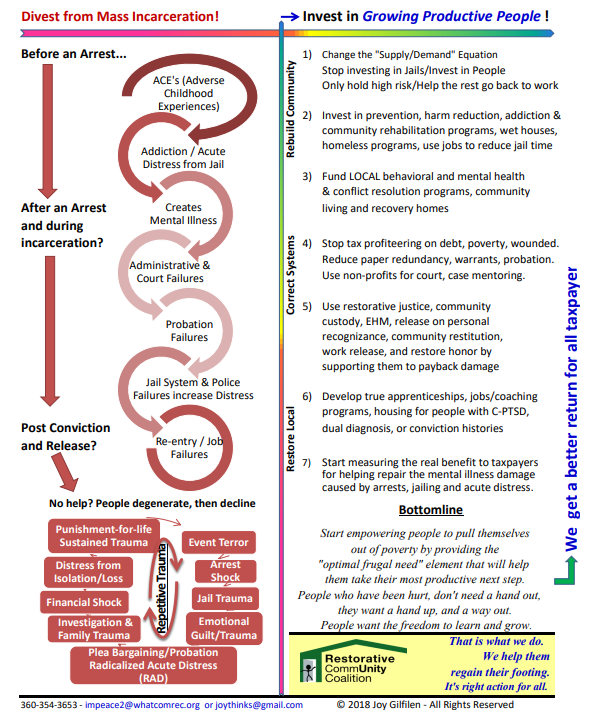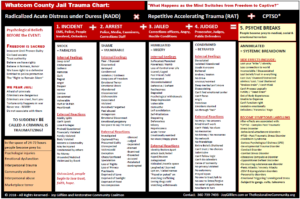STEP 2: BLINDSPOTS: UNEXPECTED FINDINGS FROM JAIL TRAUMA RESEARCH
As these intense interviews started building up, I started interviewing the family, friends, employers, police, emergency responders – even hospital staff and public defenders and justice system employees about what they observed, experienced and felt from helping the persons, or their families deal with the aftershocks. The interviews yielded a whole other level of awareness and insights that typically have not been talked about in most writings about reform. And the pre-assumption by those people who work in the system in court, in the administration, or in behavioral health or recovery is that they just assume that everyone who gets arrested is already emotionally messed up, mentally ill, or addicted – or “must have done something wrong, or you wouldn’t have been arrested in the first place.”
There is a automatic presumption of guilt and fault by the system against the person arrested that leaves no room for the possibility that the person is innocent, that the person may not have been mentally ill in the first place.
It was unexpected to realize that no-one, including me, the researcher that the stress of the arrest distresses the mental health and stability of everyone who goes through the system…and it was likely that the impacts of the loss of freedom, the acute shock of being arrested, were the cause of the mental distress symptoms seen in people even at 1st arraignment and certainly post court. Our rise in mental illness issues can most likely be traced back to a traumatizing situation that happened with a crisis, an arrest and the impacts on the psyche.
I was taken aback to truly realize that most people arrested had no criminal intent that sparked the arrest. It was the circumstances areound a crisis that led to an incident, that sparked an arrest and accusation that the person broke a law, and that starts the sequence of distress that compounds. Many of those arrested did not seem to have had mental illness symptoms pre-incident. This was shocking and it led me to do another level of questioning for both those arrested and for all their support team members. Here is another chart summarizing what I found.
STEP 3: INTEGRATED ANALYSIS AND CHARTING FOR PUBLICATION.
After doing all this research and comparing information gleaned, I went online to find out if there were any diagnoses of mental health symptoms that matched my findings. I found the Complex Post Traumatic Distress symptoms listed in the World Health Organizations list the most comparable. I found symptoms from severe head trauma caused by split brians or broken brains to be similar as well. Nothing else fit the broad range of symptoms described and the depth of impact. The only ones that seemed to fit the plethora of symptoms were those that were exhibited by people who had experienced deep and sudden shock and betrayal by a protector or who been held hostage or captive by a “friendly”. People who were taken prisoner in a friendly land, or were held hostage by a cult, or a person taken captive and held as prey to their protector.
My bottomline conclusion: Just a call to 911 can trigger an arrest and jailing because of the way that the system of technology, protectionism and fear of liability works today. The presumption of innocence is lost and superceded by the likelihood that a law was broken, and inevitably this leads to an arrest – whether or not anyone intended to commit any crime of violate any law. The pre-assumption of guilt is made at the 911 call – and once that call is made, it triggers the system to step in and protect the government and all the people who run the legal system.
What is not shown on this chart, is the high costs that any family incurs from the point of the arrest ($10,000 to $30,000 is fairly standard) or it can escalate rapidly, throwing the family into immediate poverty as well as into RADD-RAT escalating conditions.





